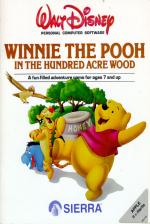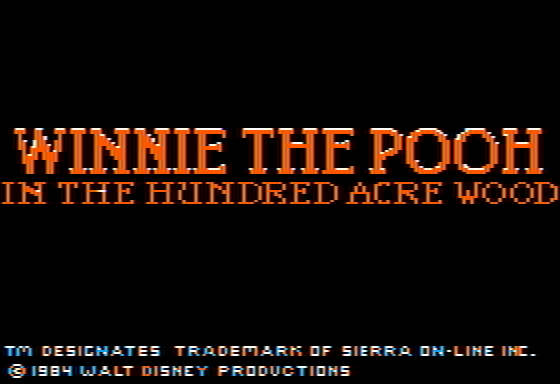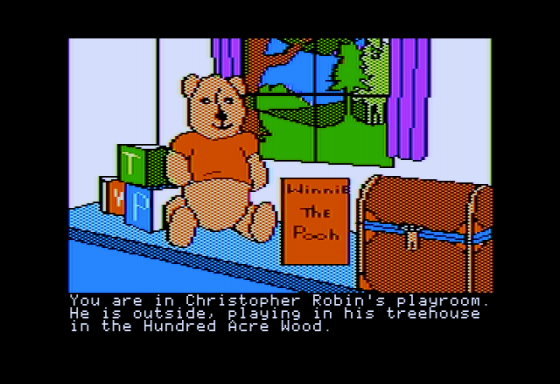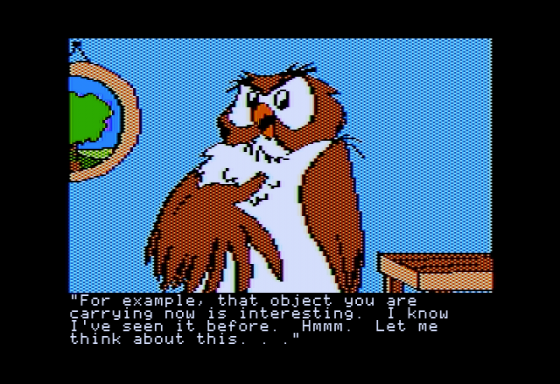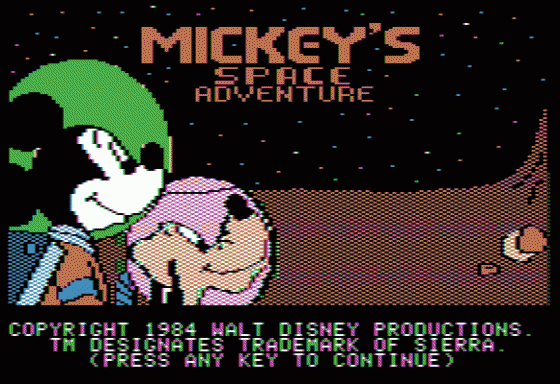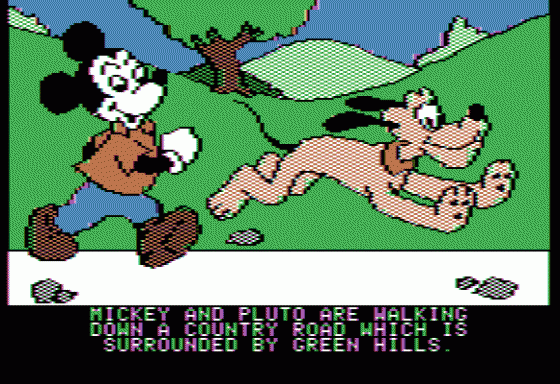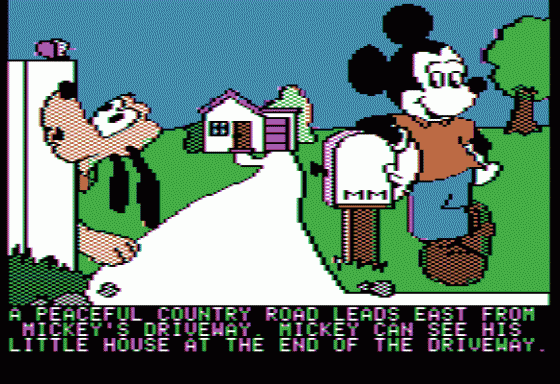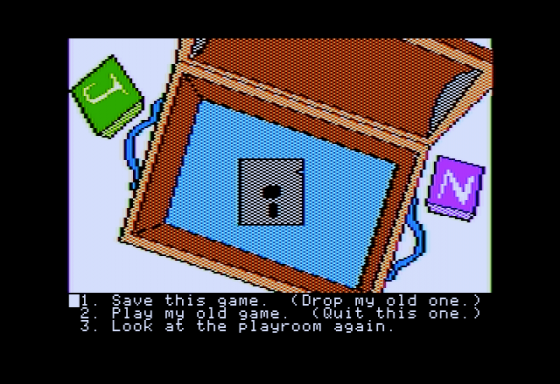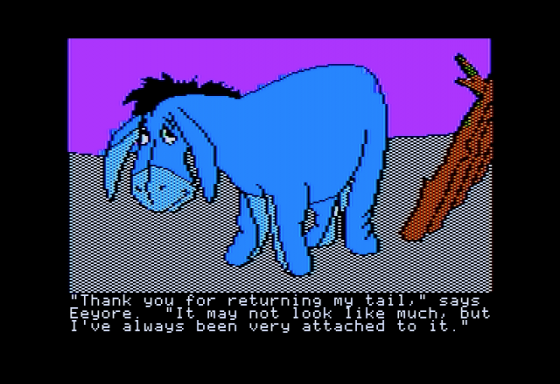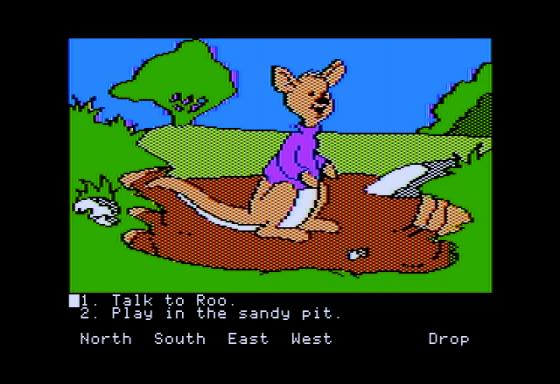
Database
 1st August 1985
1st August 1985
Categories: Review: Software
Author: Denise McKnight
Publisher: Sierra
Machine: Apple II
Published in Apple User Volume 5 Number 8
Winnie The Pooh In The Hundred Acre Wood
On more than one occasion our sanity has been saved by Winnie The Pooh. It's not that we find deep significance in his hums, it's just that the kids watch the video of the Walt Disney version, giving us valuable breathing space.
Imagine our delight when we heard that Sierra On-Line was releasing a junior adventure game based on the Pooh characters.
Mind you, we were also a little apprehensive. The kids know the dialogue by heart and we wondered whether they might not take to something a bit different. Maybe it wouldn't look like the characters they know and love.
We needn't have worried. Winnie the Pooh in the Hundred Acre Wood features superb graphics which are true to the characters. Even the tunes are reasonably accurate, which is no mean feat on an Apple.
The idea is that the blustery wind has blown everyone's possessions around the Hundred Acre Wood. It's your job to collect the different items and return them to their rightful owner.
If you can't guess to whom something belongs, the ever-loquacious Owl will give you a hint. You can only carry one item at a time, but you can drop it if you want to get something else first.
Ten objects are scattered throughout the wood, so it's necessary to keep a map. The wood is the same each time you play, but the objects can vary and will be in different locations.
Like any adventure game, there are hazards. Tigger has a habit of bouncing you to a different part of the wood and making you drop whatever you're carrying. A thick mist can descend, and although you can keep walking, you're never sure of where you'll be when you emerge. The blustery wind may also scatter any objects which you haven't returned.
You can save one game to the actual game disc and there are a few other useful facilities. For example, you can review the most recent message if it's gone from the screen and you missed it. You can also return to the play room from anywhere in the forest by pressing Esc. This is where you must be in order to save the game, but it's also handy as a short cut across the wood.
There's no typing involved because the space bar is used to cycle through the available options and the Return key is used to select the highlighted option. The manual is well presented, with a short story at the beginning, all the instructions you need, a glossary and even suggestions for further activities.
All the copyright notices attribute copyright to Walt Disney Productions - funny, thought A. A. Milne had something to do with it!
Mickey's Space Adventure
Equally nice is Mickey's Space Adventure, also from Sierra. It's more of a traditional adventure, but still aimed at young children.
Mickey and Pluto find a spaceship from the planet Oron and go exploring our solar system. They have to find a series of crystals in the right order.
The ship's computer will give a hint about which planet the next crystal is on, and the homing device won't operate if you land on the wrong planet. Along the way, you learn about the solar system, gravity and quite a bit of chemistry.
Did you know, for example, that on Earth, Mickey Mouse weighs 100lb? If you take his bathroom scales along on the trip you can weigh him on each planet and see the effects of different gravities.
Like the Pooh game, this one also uses Space bar and Return, so typing errors don't spoil the game for the children. There's still a lot of reading and comprehension involved though.
The graphics are excellent too. There's not as much music and humour as in the Pooh game, but this is compensated for by the increased information content.
The manual explains that the extraterrestrials who appear are merely figments of the authors' imaginations. However, they reflect the environmental characteristics of their habitats. There's a Save facility which requires a new blank disc. Each new game requires you to get the crystals in a different order, so the game can be played many times.
There are also suggested follow-up activities, such as understanding the seasons with the aid of a skewer, an orange and a light bulb. Both of these games aim to offer a little more than fun. The motto of the series is "Playing for fun/learning for life" and they certainly live up to the fun side of things.
As for the learning, our seven-year-old has enjoyed learning about the planets, a topic which she had previously described as boring.
Even our three-year-old can exercise her sense of direction with the Pooh game, although the packaging suggests it's appropriate for ages 7 and up. The Pooh game is more of a fun at home type of package, but the Mickey game could easily form part of a school's software library.
There is a tendency for software houses to create a game around a famous character in the hope that the character sells the game. In the case of these games, they deserve to succeed on merit alone.
Other Reviews Of Winnie The Pooh In The Hundred Acre Wood For The Apple II
Winnie The Pooh (Sierra)
A review
Scores
Apple II Version| Winnie The Pooh In The Hundred Acre Wood | 84% |
| Mickey's Space Adventure | 83% |
| Overall | 84% |

